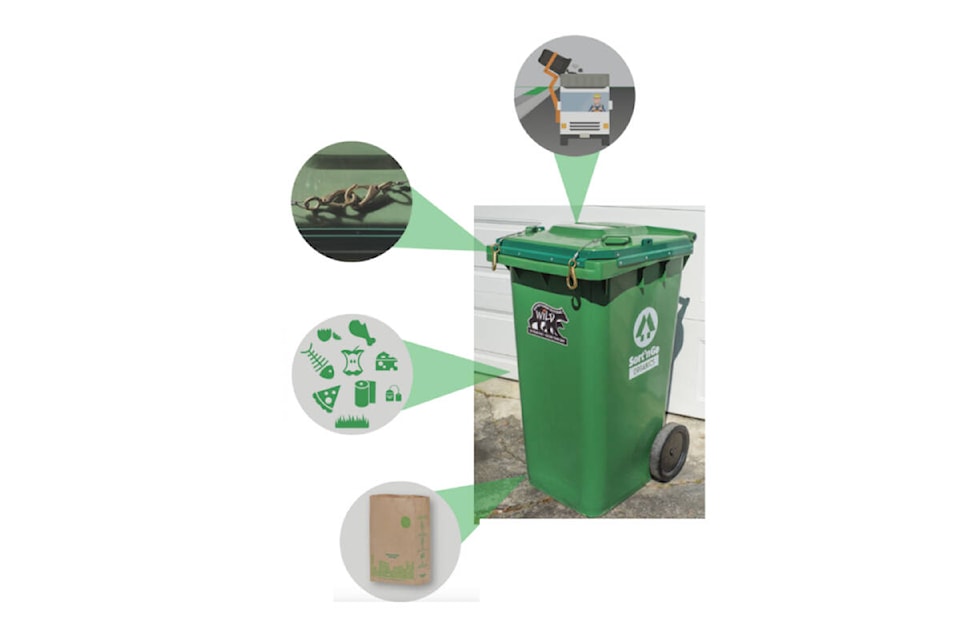This fall, the Alberni-Clayoquot Regional District (ACRD) will deliver new roadside waste collection carts to single-family households in west coast communities.
The introduction of an organics (food/yard waste) collection service for residential homes is part of larger waste updates for the region, which includes a transition to an automated system that requires uniform carts for pickups: one for organics, one for recycling and one for garbage.
Last month, we highlighted the new blue recycling carts, and this month we’re introducing the new green organics carts – including what can and can’t go in for collection.
READ MORE: From blue bins to blue carts: Sort ‘n Go!
About the green carts
The default Sort’nGo service includes a 120L organics cart (42Lx19Hx22Din) per household along with one (240L) recycling cart and (120L) garbage cart.
Features of the green carts include:
- Wheels – for easy mobility.
- Lids – to guard against inclement weather and pests.
- Locking mechanisms – certified wildlife-resistant to help guard against pests. Keep locks on during the week, and then unclipped and hooked together on collection day).
What can go in the green carts?
- Scape the plate – roadside organics collection is a ‘scrape the plate’ program, which means residents can dispose of all food waste, including bones, meat, dairy, grease, coffee grinds and soiled paper-based items such as paper towels, tissues, paper coffee filters, and greasy pizza boxes.
- Yard waste – small amounts of yard waste can go in the green cart (branches no larger than 2in diameter and 2ft long). Just be sure that you can easily close the lid and the cart is not too heavy with material such as packed wet leaves, that make it difficult for the arm of the truck to lift.
What can’t go in the green carts?
- Plastic liners – Do not use plastic liners in the green cart.Even those labeled compostable. This is because not all compostable products breakdown the same way or over the same time frame and will contaminate the compost. Organics carts can be lined with paper bags, newspaper or cardboard.
- Produce/garden stickers & accessories – items on produce such as stickers, twist ties and rubber bands will contaminate the compost stream so please remove these before disposal. Garden trays, and plastic flower tags also don’t belong.
- Coffee pods – these small plastic containers that store grounds don’t belong in the green carts and should go in the garbage.
Why are we diverting organics from the landfill?
Because organic waste isn’t garbage! It is food and yard waste that can be transformed into compost for our community green spaces. On the west coast, we can also increase the lifespan of our landfills by diverting up to 43 per cent of existing residential household waste into compost. As well, we can decrease the amount of harmful methane gases that are emitted when organic waste is left buried under garbage – ensuring emissions limits are not triggered, which would require a costly gas capture system.
When will organics be collected?
Organics will be collected weekly, with recycling and garbage moving to a bi-weekly schedule and collected on alternating weeks (meaning residents will wheel out one cart a week). When we look at the data from the City of Port Alberni, which launched the Sort’nGo service in September 2021, garbage waste has been cut almost in half – that’s a 43 per cent decrease of garbage disposal volume! The more we divert, the less garbage we will have for our black carts.
Visit www.letsconnectacrd.ca/sortngo-west-coast and follow for updates, event notifications, ask the project team questions and more.
